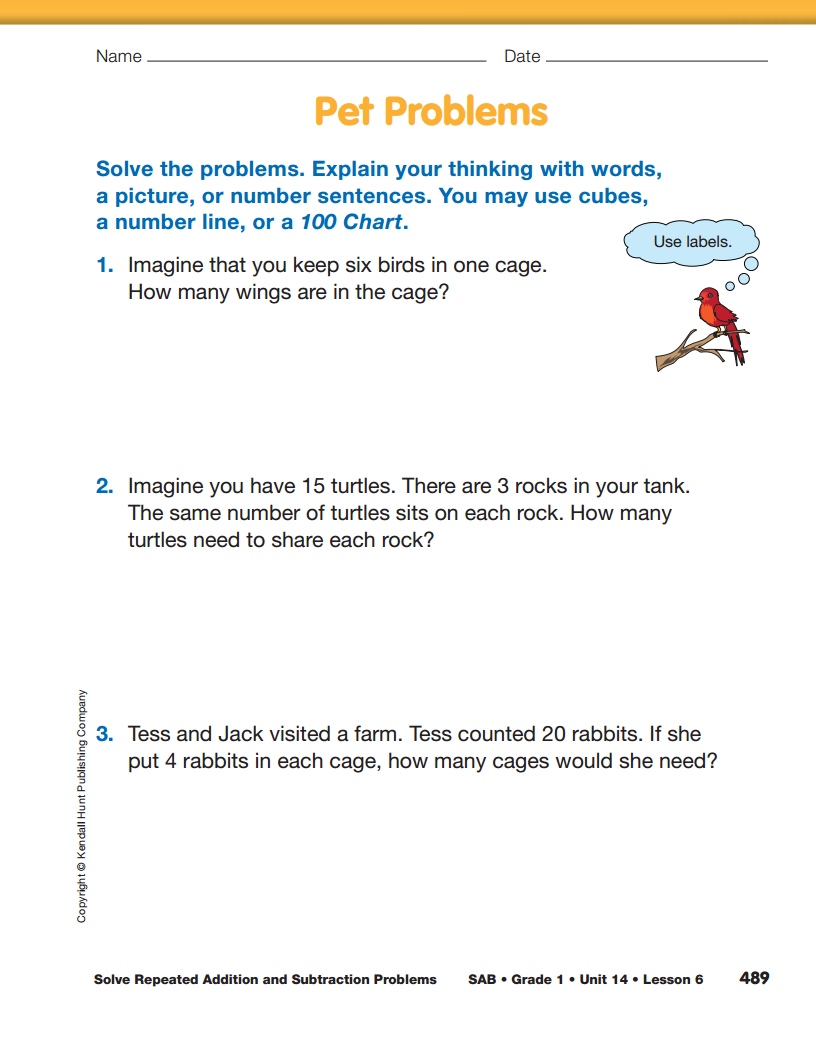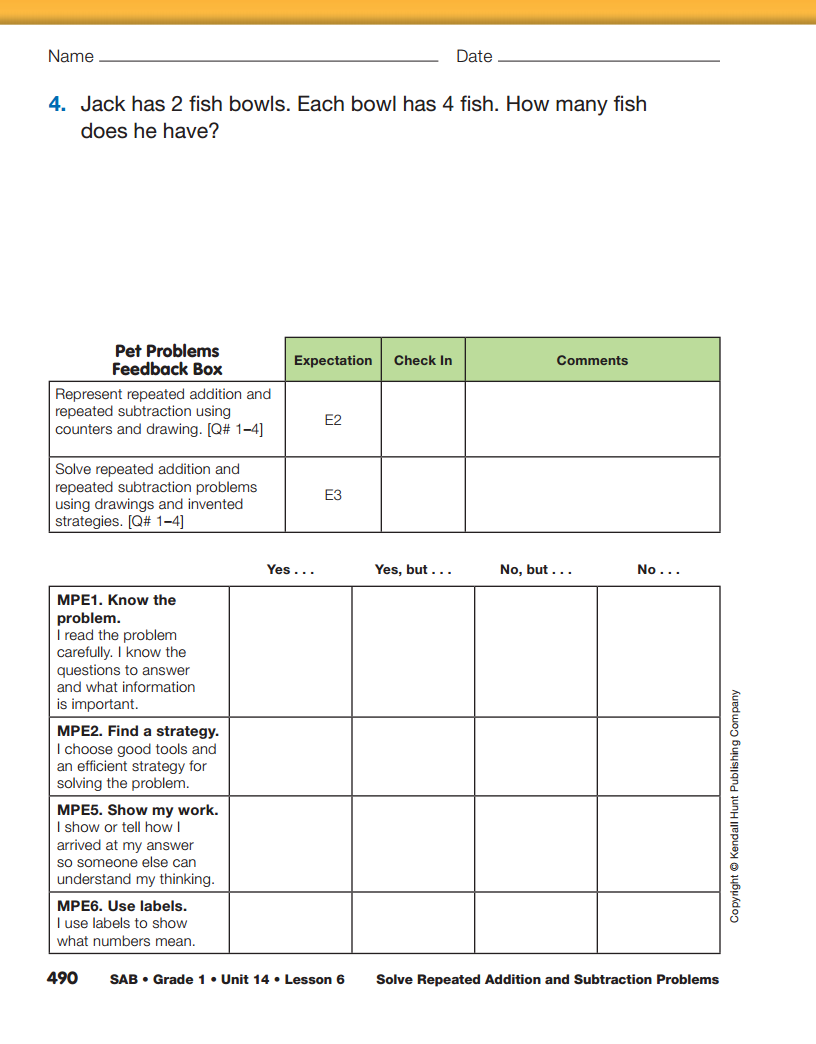Select several students to read their problem for
Check-In: Question 2 on the Golden Eggs page in
the Student Activity Book to the class. Discuss strategies
for solving the problems. Highlight more than
one way to solve each problem.
- How do you know when to add or subtract the
numbers in a problem and when to use repeated
addition or repeated subtraction to solve the problem?
(Possible response: When you have different
amounts in each group, you add to find the
total. When you have the same number in each
group and you have to find the total, use a
repeated addition strategy. If you have to find the
difference between two groups, subtract. When
you have a total and you have to place the same
number in each group, use a repeated subtraction
strategy.)
- What are some strategies we used to solve
repeated addition problems? (Possible response:
skip counting, adding the same number several
times, drawing pictures)
- What are some strategies we used to solve
repeated subtraction problems? (Possible
response: drawing the total and making boxes
around equal amounts, skip counting backward
on the number line)
- Are some strategies more efficient than others?
Why do you think so?
Assign the Pet Problems pages in the Student
Activity Book to assess students' abilities to solve
repeated addition and repeated subtraction problems.
Before they begin working, display and direct students'
attention to the Math Practices page in the
Student Activity Book Reference section. Explain
that while completing the Pet Problems pages, they
will need to focus on the important details of the
problem [MPE1]; finding a solution strategy such as
using repeated addition, repeated subtraction, or skip
counting; and choosing tools that will help them
solve the problems efficiently [MPE2]. Have connecting
cubes, number lines, and 100 Charts readily
available. Students should show or tell how they
solved the problems [MPE5] and use labels to show
what their numbers
mean [MPE6].
See Figure 2 for two ways to solve Question 1. The
first student used repeated addition and the second
student used skip counting by twos.
Use the Pet Problems pages in the Student Activity Book to
assess students' abilities to represent repeated addition and
repeated subtraction using counters and drawings [E2]; solve
repeated addition and repeated subtraction problems using
drawings and invented strategies [E3]; know the problem
[MPE1]; find a strategy [MPE2]; show my work [MPE5]; and
use labels [MPE6].
To provide targeted practice with the above Expectations,
collect students' word problems for Check-In: Question 2 on
the Golden Eggs pages in the Student Activity Book.
Assemble the pages in a book or a folder. Place the collection
of word problems with copies of the Solving Golden Reward
Problems Master in a center. Provide access to connecting
cubes, the 100 Chart, and number lines.
















